Complete Solutions to EXERCISE - IV of chapter LAW OF MOTION of Class 11 book with complete answers and questions
| Class 11 | PHYSICS |
| Chapter | LAW OF MOTION |
| NARAYANA | EXERCISE - IV |
| Number Of Questions | 35 |
| Academic Year | 2023-24 |
When a body is stationary:
View SolutionThe inertia of a moving object depends on:
View SolutionA thief stole a box full of valuable articles of weight W and while carrying it on his back, he jumped down a wall of height ‘ h ’ from the ground. Before he reached the ground he experienced a load of
View SolutionThere are three Newton's laws of motion namely I, II and III : we can derive:-
View SolutionTwo blocks `m_(1)` = 5 g and `m_(2)`= 10 g are hung vertically over a light frictionless pulley as shown in figure. What is the acceleration of the masses when left free ?
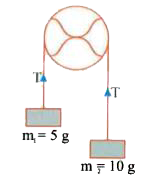
View SolutionIn the figure a smooth pulley of negligible weight is suspended by a spring balance. Weights of 1kg and 5 kg are attached to the opposite ends of a string passing over the pulley and move with acceleration because of gravity. During the motion, the spring balance reads a weight of `:`
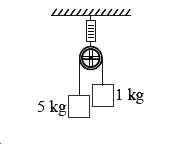
View SolutionTwo masses 2 kg and 3 kg are attached to the end of the string passed over a pulley fixed at the top. The tension and acceleration are
View SolutionTwo bodies of mass 6 kg and 4 kg are tied to a string as shown in the following figure. If the table is smooth and pulley frictionless, then acceleration of mass 6 kg will be (`g =10 ms^(-2)`)
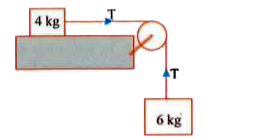
View SolutionThe pulley arrangements shown in figure are identical, the mass of the rope being negligible. In case I the mass m is lifted by attaching a mass `2m` to the other end of rope with a constant downward force `F =2mg`, where g is acceleration due to gravity The acceleration of mass m in case I is
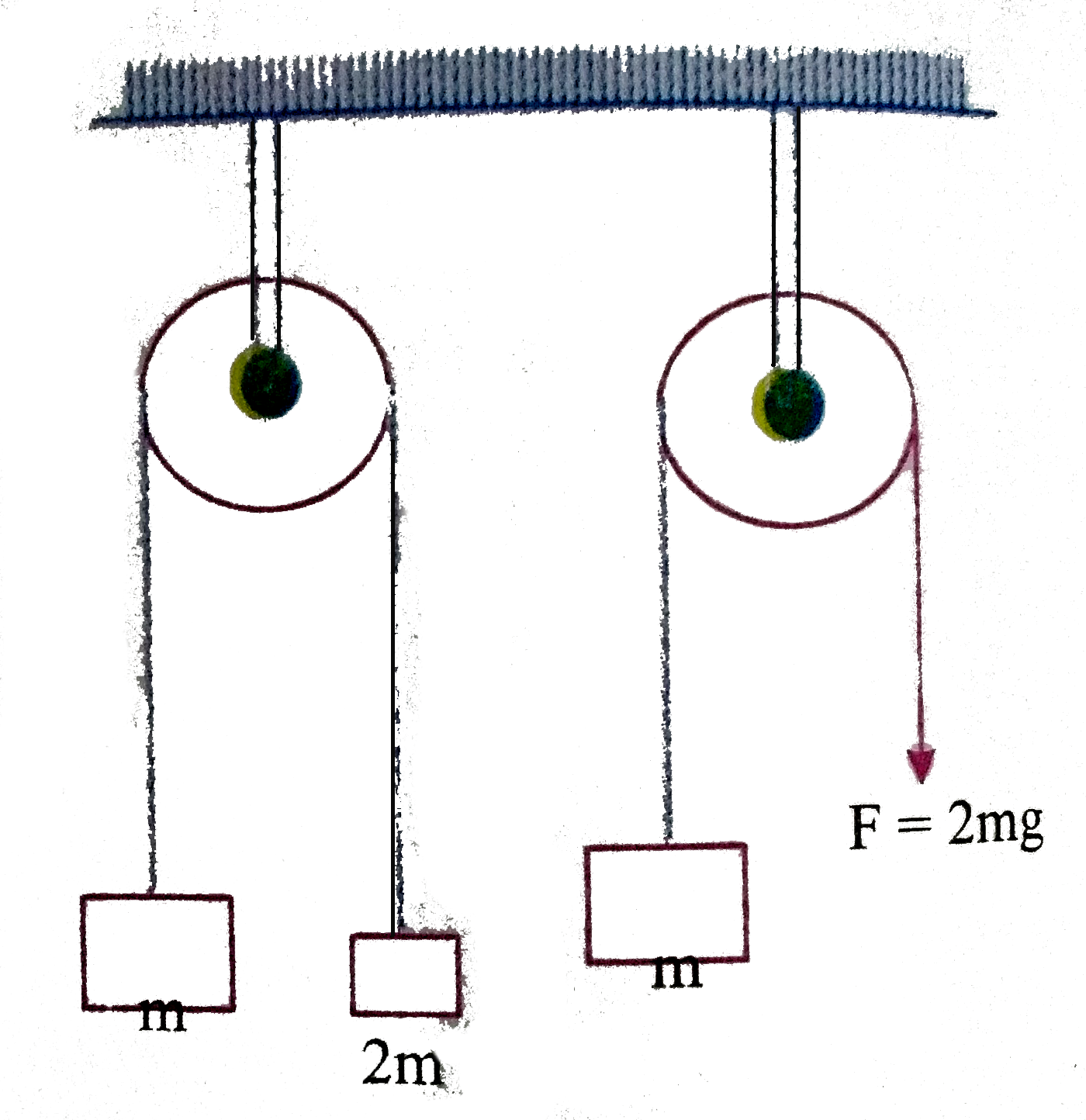 .
.
View SolutionA string of negligible mass going over a clamped pulley of mass m supports a block of mass M as shown in the figure. The force on the pulley by the clamp is given by
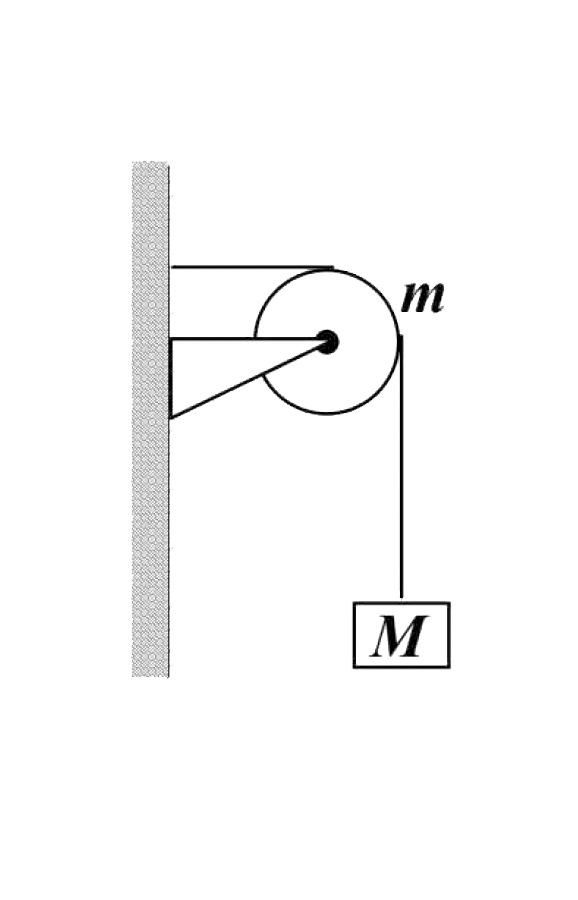
View SolutionTwo masses of `8 kg` and `4 kg` are connected by a string as shown in figure over a frictionless pulley.The acceleration of the system is
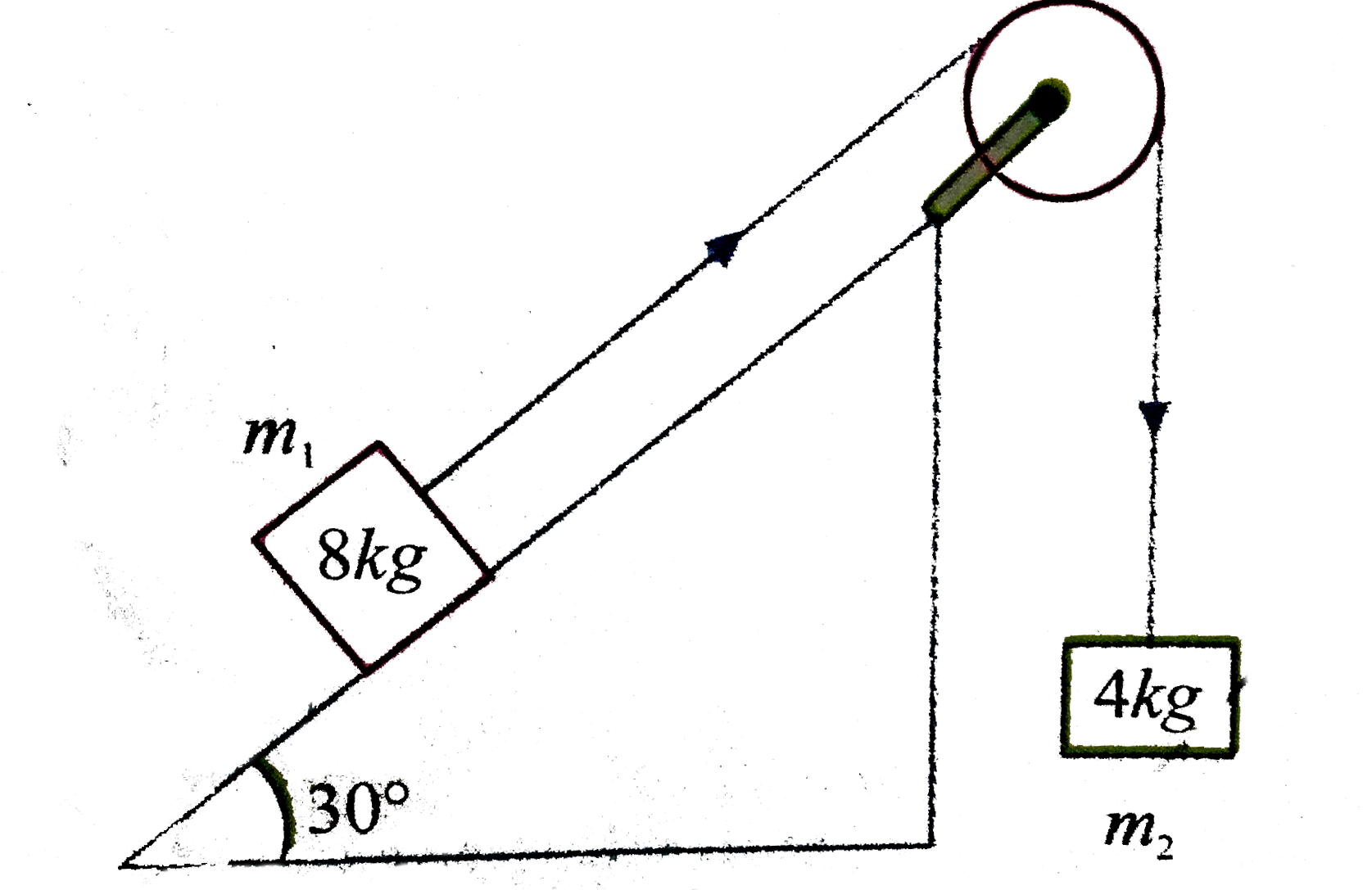
View SolutionAn empty plastic box of mass m is found to accelerate up at the rate of g/6 when placed deep inside water. How much sand should be put inside the box so that it may accelerate down at the rate of g/6?
View SolutionA monkey is decending from the branch of a tree with constant acceleration. If the breaking strength is 75% of the weight of the monkey, the minimum acceleration with which monkey can slide down without breaking the branch is
View SolutionFig. shows a system of three masses being pulled with a force F. the masses are connected to each other by strings. The horizontal surface is frictionless . The tension `T_(1)` in the first string is 16 N. The acceleration of the system is `:`

View SolutionFig. shows a block of mass `m_(1)` resting on a smooth surface. It is connected to a mass `m_(2)` by a string passing over a massless and frictionaless pulleys `m_(2) gt m_(1)`. The acceleration of the hanging mass `m_(2)` is `:`
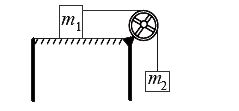
View SolutionA 100 kg block is suspended with the help of three strings A, B and C. The tension in the string A is
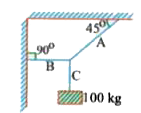
View SolutionA frictionless inclined plane of length l having inclination `theta` is placed inside a lift which is accelerating downward with on acceleration a `(ltg)`. If a block is allowed to move down the inclined plane, from rest, then the time taken by the block to slide from top of the inclined plane to the bottom of the inclined plane is
View SolutionFriction
View SolutionA box is placed on an inclined plane and has to be pushed down.The angle of inclination is
View SolutionFigure shows two block `A` and `B` pushed against the wall with the force `F` . The wall is smooth but the surfaces in contact of `A` and `B` are rough. Which of the following is true for the system of blocks to be at rest againts wall?
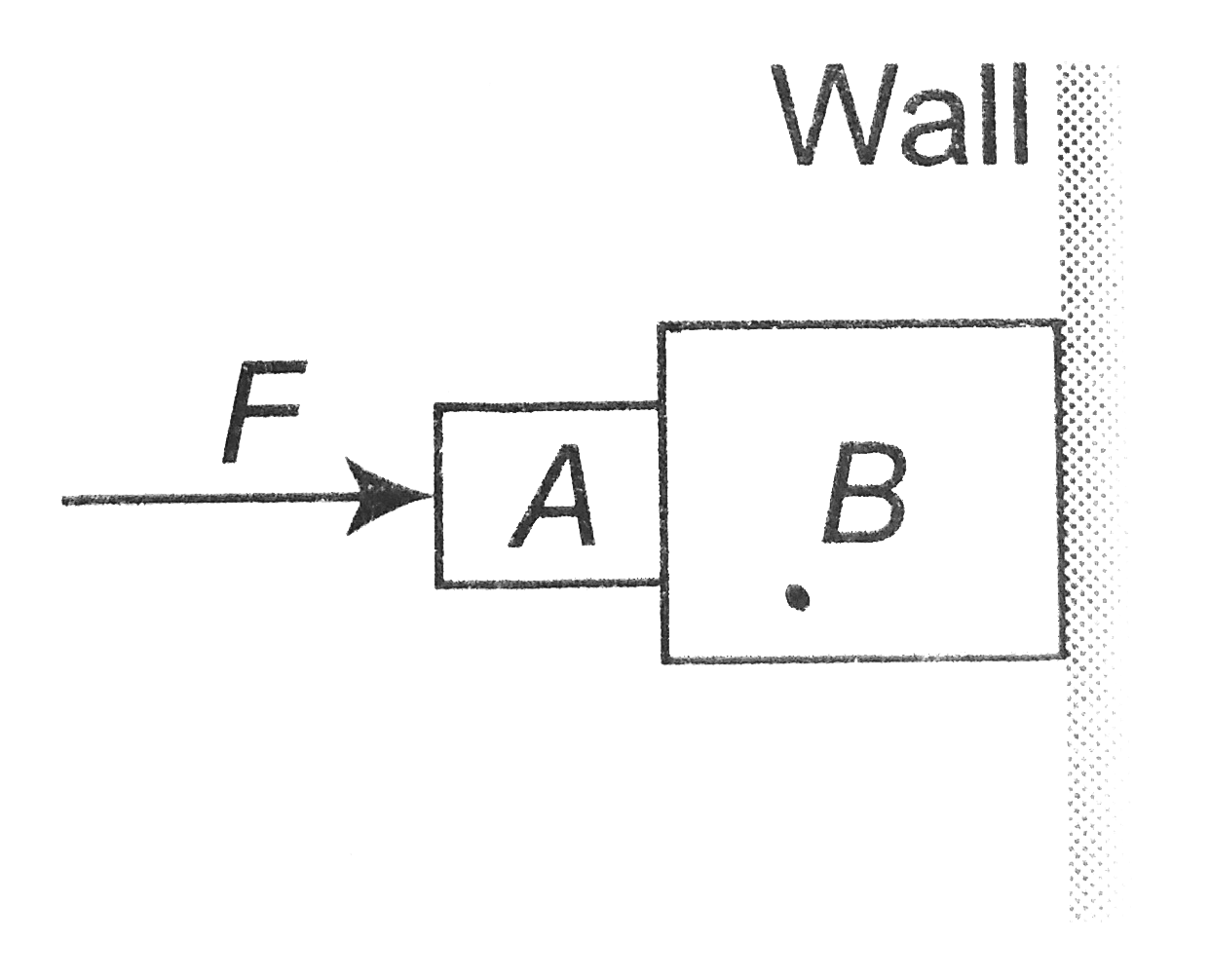
View SolutionIf `mu_(k)` is the coefficient of kinetic friction and `mu_(s)` the coefficient of static friction then generally
View SolutionA block of mass m is placed on a rough floor of a lift . The coefficient of friction between the block and the floor is `mu`. When the lift falls freely, the block is pulled horizontally on the floor. What is the force of friction -
View SolutionWhen a horse pulls a wagon, the force that causes the horse to move forward is the force
View SolutionThe coefficient of static friction, `mu_(s)` between block A of mass 2 kg and the table as shown in the figure is 0.2. What would be the maximum mass value of block B so that the two blocks do not move? The string and the pulley are assumed to be smooth and massless.`(g=10m//s^(2))`

View SolutionA body of mass m slides down a rough plane of inclination `alpha` . If `mu` is the coefficient of friction, then acceleration of the body will be
View SolutionA particle is moving along a circular path. The angular velocity, linear velocity, angular acceleration, and centripetal acceleration of the particle at any instant respectively are `vecw,vecv,vecalpha,veca_(c)`. Which of the following relation is not correct ?
View SolutionThe angular acceleration of a particle moving along a circular path with uniform speed is
View SolutionA bike of mass 200 kg (with rider) is running on the road with constant speed `5 m//s`, the reaction exerted on the bike by the road at the lowest point will be (`g= 10 m//s^(2)`)
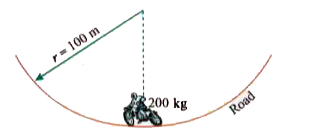
View SolutionAt t = 0 and u = 0, an object begins to be uniformly accelerated by a force of 40 N. The momentum of the body at t= 4 s is
View SolutionTwo bodies of 5 kg and 4 kg are tied to a string as shown in the figure. If the surface and pulley both are smooth, acceleration of 5 kg body will be equal to `:`
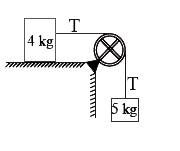
View SolutionAn unloaded car moving with velocity u on a road can be stopped in a distance S. If passengers add `40%` to its weight and braking force remains the same, the stopping distance at velocity u is now
View SolutionThe masses of `10kig` and `20kg` respectively are connected by a massless spring as shown in figure. A force of `200N` acts on the `20kg` mass. At the instant shown, the `10kg` mass has acceleration `12m//sec^(2)` . What is the acceleration of `20kg` mass?

View SolutionA car going at a speed of 6m/s when it encounters a 15m slope of angle `30^(@)`. The friction coefficient between the road an tyre is 0.5. the driver applies the brakes. The minimum speed of car with with which it can reach the bottom is `(g=10m//s^(2))`
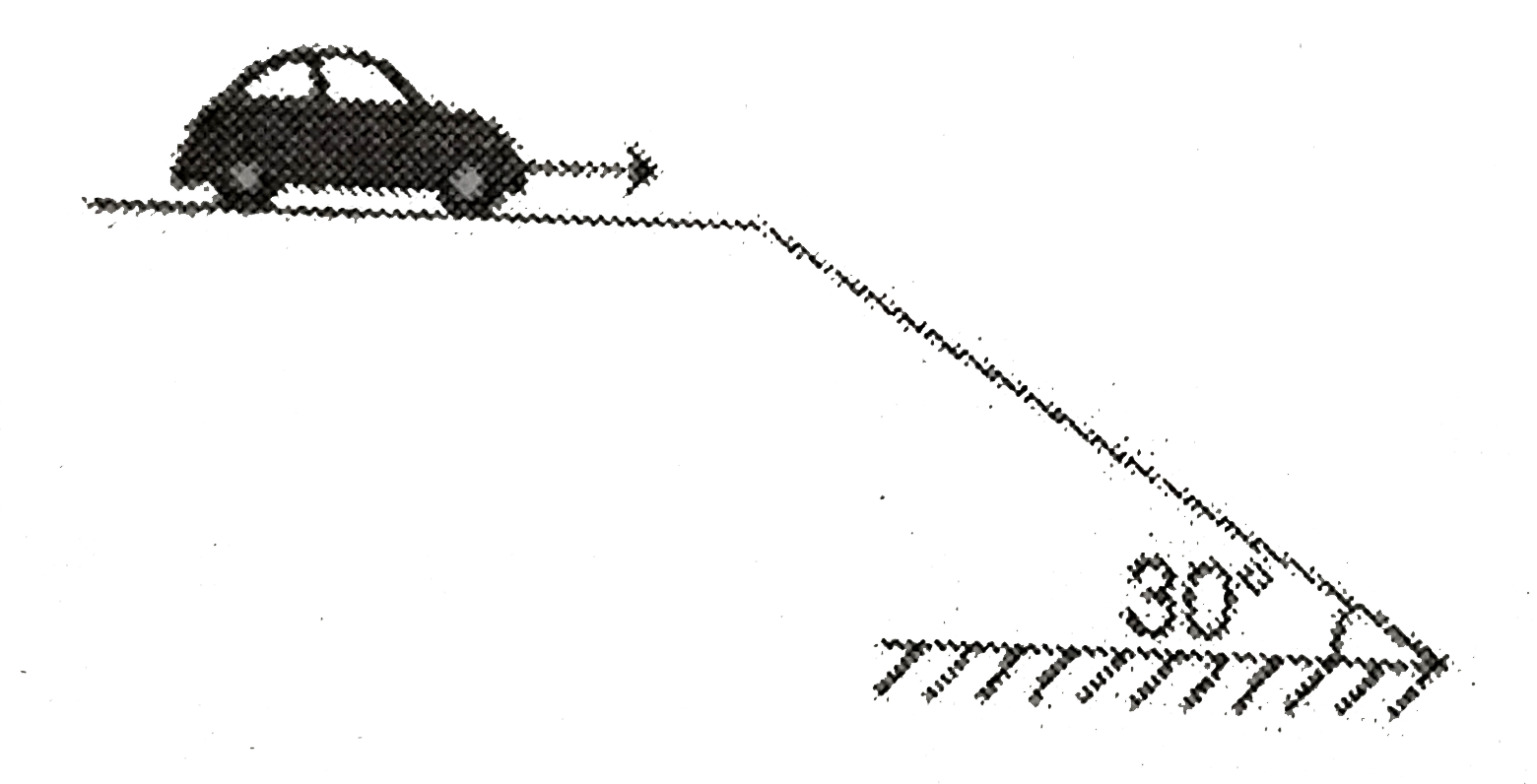
View SolutionA block of mass` m` is placed on another block of mass `M` which itself is lying on a horizontal surface .The coefficient of friction between two blocks is `mu_(1) `and that between the block of mass `M` and horizontal surfece is `mu_(2)` What maximum horizontal force can be applied to the lower block move without separation?
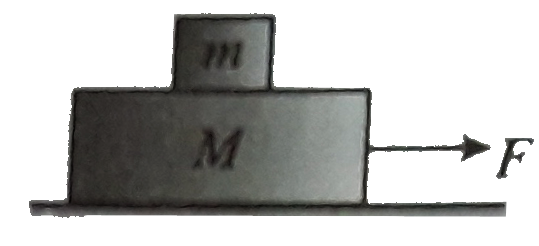
View SolutionBlock A of mass 5 kg is resting on a frictionless floor. Another block B of mass 7kg is resting on it as shown in the figure. The coefficient of friction between the blocks is 0.5 while kinetic friction is 0.4. If a force of 100 N is applied to block B, the acceleration of the block A will be `( g =10 ms^(-2))` `:`
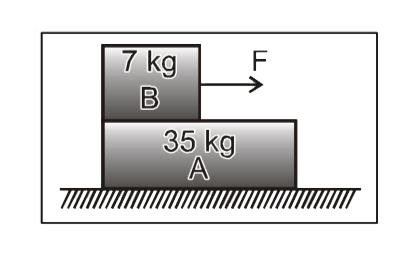
View Solution
EXERCISE - IV questions and complete solutions for chapter LAW OF MOTION of NARAYANA PHYSICS (HINGLISH) of Class 11
All Exercises from NARAYANA Class 11 PHYSICS LAW OF MOTION
- C.U.Q
- EVALUATE YOURSELF - 1
- EVALUATE YOURSELF - 2
- EVALUATE YOURSELF - 3
- EVALUATE YOURSELF - 4
- EVALUATE YOURSELF - 5
- EXERCISE - I (C.W)(EQUILIBRIUM OF A PARTICLE)
- EXERCISE - I (C.W)(IMPULSE)
- EXERCISE - I (C.W)(LAW OF CONSERVATION OF MOMENTUM)
- EXERCISE - I (C.W)(LAWS OF FRICTION)
- EXERCISE - I (C.W)(MOTION OF A BODY ON THE INCLINED PLANE)
- EXERCISE - I (C.W)(MOTION ON A HORIZONTAL ROUGH SURFACE)
- EXERCISE - I (C.W)(NEWTON.S LAWS OF MOTION)
- EXERCISE - I (C.W)(OBJECTS SUSTENDED BY STRINGS & APPARENT WEIGHT)
- EXERCISE - I (C.W)(PULLING/PUSHING A BODY)
- EXERCISE - I (C.W)(UNIFORM CIRCULAR MOTION)
- EXERCISE - I (H.W)(CIRCULAR MOTION)
- EXERCISE - I (H.W)(IMPULSE)
- EXERCISE - I (H.W)(LAW OF CONSERVATION OF MOMENTUM)
- EXERCISE - I (H.W)(LAWS OF FRICTION)
- EXERCISE - I (H.W)(MOTION OF A BODY ON THE INCLINED PLANE)
- EXERCISE - I (H.W)(MOTION ON A HORIZONTAL ROUGH SURFACE)
- EXERCISE - I (H.W)(NEWTON.S LAWS OF MOTION)
- EXERCISE - I (H.W)(OBJECTS SUSTENDED BY STRINGS & APPARENT WEIGHT)
- EXERCISE - II (C.W)(CIRCULAR MOTION)
- EXERCISE - II (C.W)(EQUILIBRIUM OF A PARTICLE)
- EXERCISE - II (C.W)(IMPULSE)
- EXERCISE - II (C.W)(LAW OF CONSERVATION OF MOMENTUM)
- EXERCISE - II (C.W)(MOTION OF BODY ON THE INCLINED PLANE)
- EXERCISE - II (C.W)(MOTION ON A HORIZONTAL ROUGH SURFACE)
- EXERCISE - II (C.W)(NEWTON.S LAWS OF MOTION)
- EXERCISE - II (C.W)(OBJECTS SUSPENDED BY STRINGS AND APPARENT WEIGHT)
- EXERCISE - II (C.W)(PULLING/PUSHING A BODY)
- EXERCISE - II (H.W)(CIRCULAR MOTION)
- EXERCISE - II (H.W)(MOTION OF A BODY ON THE INCLINED PLANE)
- EXERCISE - II (H.W)(MOTION ON A HORIZONTAL ROUGH SURFACE)
- EXERCISE - II (H.W)(NEWTON.S LAWS OF MOTION)
- EXERCISE - II (H.W)(OBJECTS SUSPENDED BY STRINGS AND APPARENT WEIGHT)
- EXERCISE - II (H.W)(PULLING/PUSHING A BODY)
- EXERCISE - III
- EXERCISE - IV
- Illustration